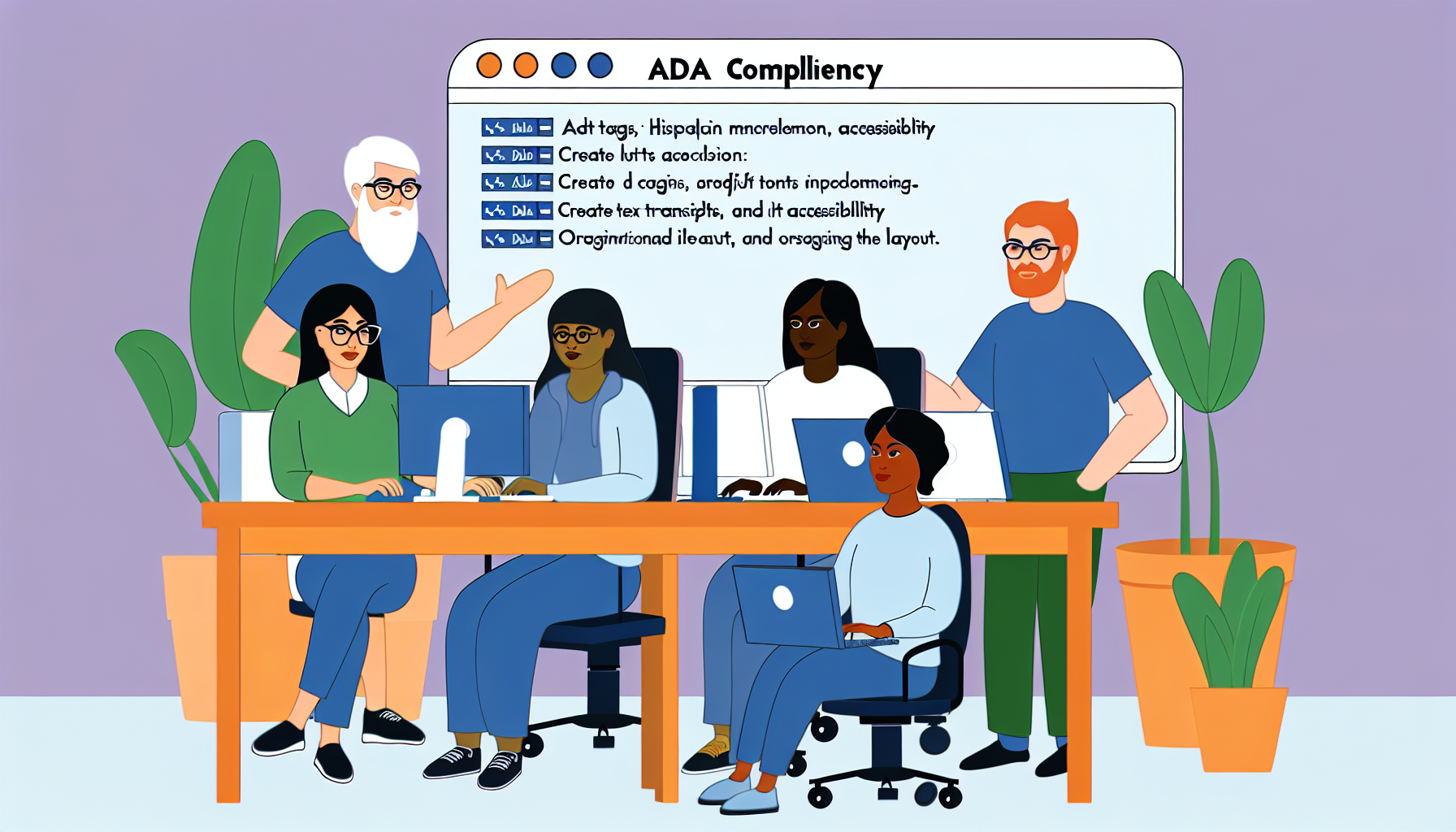|
|
Website ADA Compliance
Website ADA compliance refers to the accessibility of a website to all users, including those with disabilities. The Americans with Disabilities Act (ADA) mandates that businesses must ensure their web content is accessible to people with disabilities. This includes vision impairment, hearing loss, and other forms of disabilities. While there are no clear ADA regulations for websites, businesses are expected to offer "reasonable accessibility". Many organizations follow the Web Content Accessibility Guidelines (WCAG) to ensure their websites are accessible. These guidelines cover aspects like perceivable content, operable navigation, understandable content, and robust compatibility with various devices and platforms. Non-compliance with ADA can lead to lawsuits and missed business opportunities.
Making a Website ADA CompliantCreating an ADA-compliant website involves several steps to ensure it is accessible to all users, including those with disabilities. Here are some strategies to improve website accessibility:
While these steps can help make your website more accessible, it's also important to regularly test your website with different assistive technologies to ensure all users can access and navigate your content. Consulting with an attorney who specializes in disability law can provide further guidance on ADA compliance. Remember, making your website ADA compliant not only helps avoid potential lawsuits but also makes your website more user-friendly, potentially attracting a wider audience.
Responding to an ADA Lawsuit LetterIf you receive an ADA lawsuit letter, it's crucial to take immediate action. Here are some steps you should follow:
Remember, an ADA lawsuit is a serious matter and should be handled promptly and professionally. While the process can be stressful, it's also an opportunity to improve your website and make it accessible to all users, which can ultimately benefit your business in the long run.
How Ellipsis Readymade Website Program Can Help with ADA ComplianceThe Ellipsis Readymade Website Program is designed to help businesses create professional, high-quality websites that not only meet their marketing objectives but also comply with important regulations like the Americans with Disabilities Act (ADA). One of the key features of our program is the ADA Compliance Module, available in our BOLD and BADASS+ plans. This feature is designed to make your website easier to navigate and read by people with certain disabilities. By incorporating this module, we aim to ensure that your website is accessible to all users, thereby reducing the risk of ADA non-compliance. Our team of experts understands the importance of ADA compliance and the potential legal and reputational risks associated with non-compliance. We work diligently to ensure that your website meets the necessary standards. This includes creating alt tags for images, videos, and audio files, providing text transcripts for video and audio content, identifying the site's language in the header code, offering alternatives and suggestions when users encounter input errors, and creating a consistent, organized layout. Furthermore, we believe in proactive compliance. This means that we don't just react to ADA compliance issues when they arise; instead, we actively seek to build and maintain websites that meet ADA standards from the outset. This approach not only helps to prevent potential lawsuits but also ensures that your website is user-friendly and accessible to all, which can ultimately enhance your brand's reputation and reach. With the Ellipsis Readymade Website Program, you can focus on growing your business, confident in the knowledge that your website is in compliance with ADA regulations.
Tags: website,ada compliance,small business
------
Gautam Tandon Jan/23/2024 |
|
© 2024 Ellipsis Marketing LLC - Terms of Use & Privacy Policy Website Accessibility |




